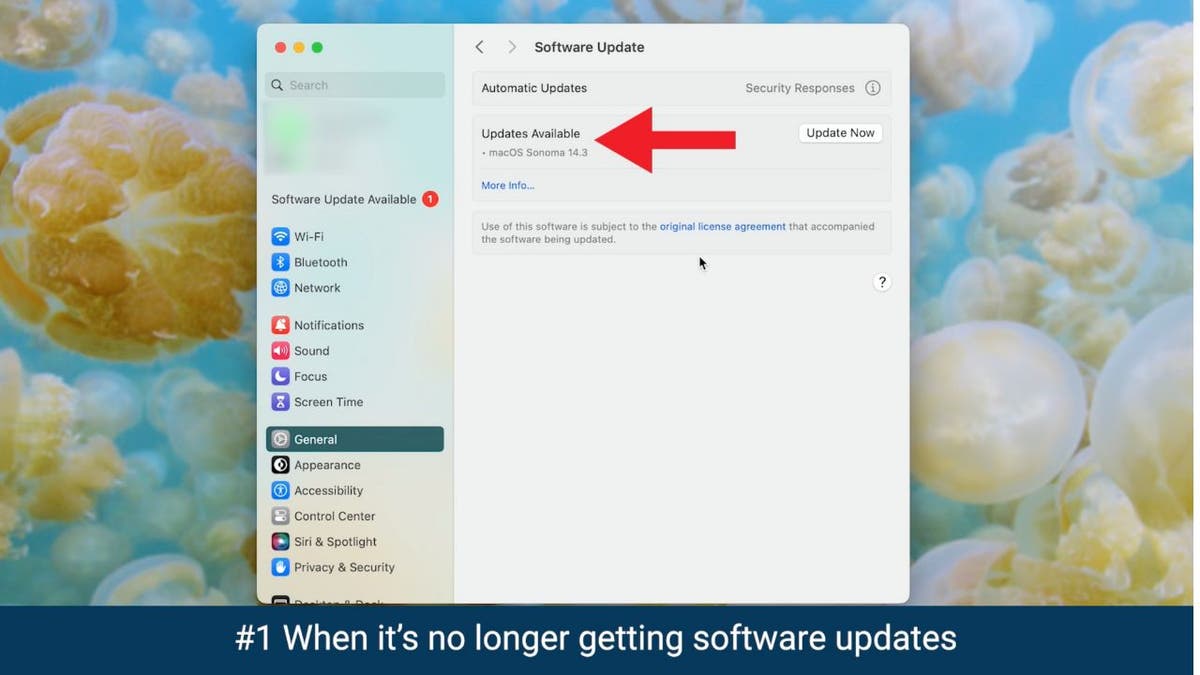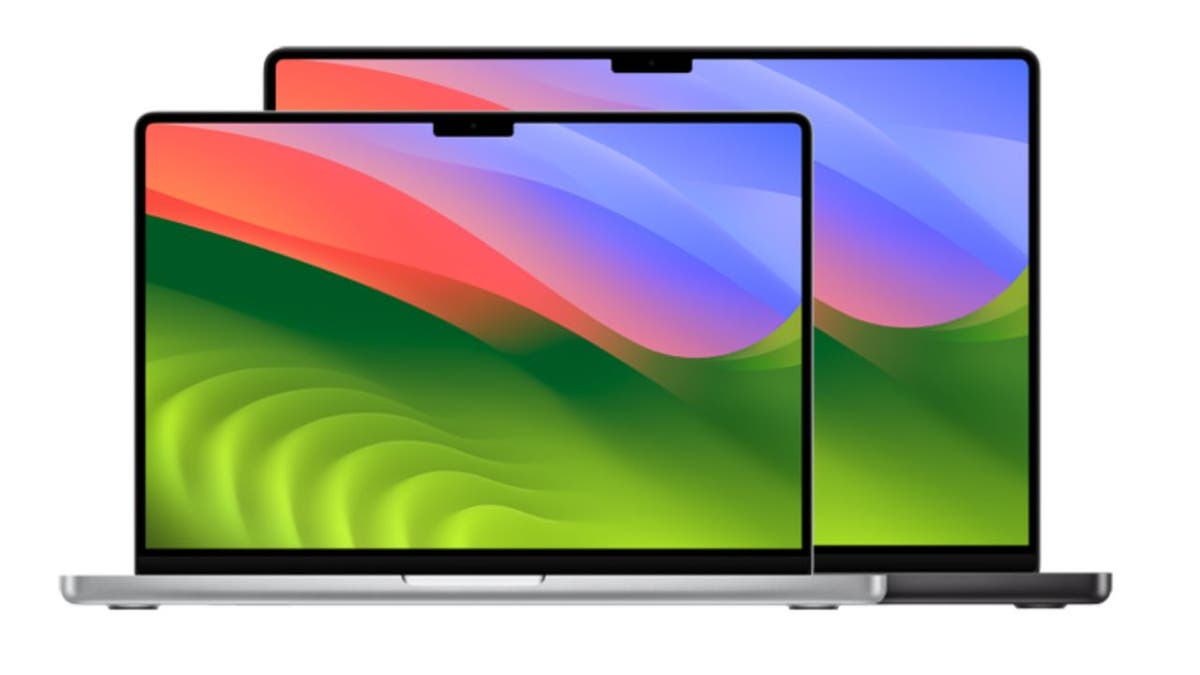Is it time to say goodbye to your Mac?
It’s a common question for many who have begun to see evidence that their computer just isn’t working like it used to.
So what are the signs indicating it might be time for an upgrade to a new one? Here are some things to look for as you contemplate getting rid of your trusty Mac.
CLICK TO GET KURT’S FREE CYBERGUY NEWSLETTER WITH SECURITY ALERTS, QUICK VIDEO TIPS, TECH REVIEWS, AND EASY HOW-TO’S TO MAKE YOU SMARTER

Man typing on a MacBook. (Kurt “CyberGuy” Knutsson)
How long do Macs last?
First off, there’s no one-size-fits-all answer to this question. The longevity of a Mac depends on several factors, including usage intensity and maintenance. Generally, a Mac can offer around a decade of solid performance with regular updates and proper care.
Apple’s Vintage and Obsolete products page gives us a rough idea of device longevity. Vintage products are those discontinued for more than five but less than seven years, while obsolete products are discontinued for more than seven years.
Additionally, considering macOS compatibility, most Macs are eligible for the latest macOS version for about seven years. Apple typically supports each macOS version for three years, while third-party apps might have their own compatibility timelines.
MORE: BEST NEW LAPTOPS OF 2024

Mac on a desk. (Kurt “CyberGuy” Knutsson)
5 signs it’s time for an upgrade
Is your Mac showing signs of aging? Here are five clear indicators that it might be time for an upgrade.
5 THINGS TO DO FIRST IF YOU GOT A NEW MAC
1. When it’s no longer getting software updates
When your Mac stops receiving updates, it’s a clear sign that it’s reaching the end of its life. Apple provides both upgrades and updates, with upgrades offering new macOS versions and updates providing essential security fixes. Once your Mac is no longer supported, it’s time to consider a replacement.

Mac screen showing Updates Available. (Kurt “CyberGuy” Knutsson)
2. You can’t run the apps you need
As software evolves, older Macs may struggle to run newer applications smoothly. Factors like insufficient RAM or outdated hardware can lead to compatibility issues. If you find yourself unable to run essential apps or experiencing performance lag, it might be time for an upgrade.

Mac screen showing an app can’t run. (Kurt “CyberGuy” Knutsson)
3. Lack of computer memory
Computer memory, also known as RAM, is the temporary storage that your Mac uses to run multiple tasks at once. The more memory you have, the faster and smoother your Mac can perform. If your memory is low, you may notice slowdowns, freezes, crashes or the dreaded spinning beach ball of death, and it may be time for a new Mac.

Screen notification that your system has run out of application memory. (Apple)
To check your memory usage on a Mac, you can follow these steps:
- Press ⌘ Cmd + Space to open Spotlight, or click the magnifying glass icon on the menu bar
- Type Activity Monitor into the search bar and press Enter, or click the app icon that resembles a heartbeat monitor
- Click the Memory tab in the upper navigation menu to see the amount of RAM being used by your system and apps
- Look at the Memory Pressure graph at the bottom of the window to see how efficiently your memory is serving your processing needs. Green means low memory pressure, yellow means moderate memory pressure, and red means high memory pressure. If your memory pressure graph is red or yellow, it means your Mac is running out of memory, and you may need to upgrade it

Activity Monitor on MacBook Pro. (Kurt “CyberGuy” Knutsson)
4. When you’re running out of storage space
Running out of storage space is a common issue, especially as file sizes and data volumes increase. While some workarounds exist, such as cloud storage or file cleanup tools, the inability to upgrade the SSD on most modern Macs can become a limiting factor over time and may have you darting out to get a new Mac.
GET FOX BUSINESS ON THE GO BY CLICKING HERE

Storage space indicator on Mac. (Apple)
MORE: HOW TO TIDY UP YOUR DESKTOP ON A MAC
5. You’re constantly running into problems
While Macs are known for their reliability, hardware issues can arise with age. These may include battery degradation, malfunctioning ports, trackpad issues or physical damage. If hardware problems start affecting usability or repair costs become prohibitive, it’s worth considering buying a new Mac.

Mac computer screen having problems. (Apple)
MORE: BEST VPNS FOR MAC — CYBERGUY PICKS 2024
Before buying a new Mac, try these tips to speed up your old one
While Macs are known for their longevity and reliability, they’re not immune to aging or evolving technology. However, before rushing into a new purchase, consider these tips to optimize your current Mac’s performance through maintenance and upgrades. When the time does come to bid farewell to your old computer, embrace the opportunity to get a new Mac with the latest innovations and features, especially with the Apple silicon processors offered by newer Mac models.

Mac mini showing it has M2 processor. (Apple)
MORE: HOW TO REMOVE MALWARE ON A MAC 2024
Timing for a new Mac purchase
If you’re considering an upgrade to a new Mac, timing is key. Waiting for the right moment, such as before new models are released or taking advantage of discounts on older or refurbished models, can maximize the value of your purchase.

MORE: 5 THINGS TO DO FIRST IF YOU GOT A NEW MAC
Kurt’s key takeaways
So, is it time to bid adieu to your old Mac? Only you can decide, but replacing your Mac at the proper time will keep your productivity at its max. Armed with the knowledge that we provided of your Mac’s lifespan and the five signs of aging, you’re now well-equipped to make the right choice.
What factors do you consider most important when deciding whether it’s time to upgrade your Mac? Let us know by writing us at Cyberguy.com/Contact
CLICK HERE TO GET THE FOX NEWS APP
For more of my tech tips & security alerts, subscribe to my free CyberGuy Report Newsletter by heading to Cyberguy.com/Newsletter
Ask Kurt a question or let us know what stories you’d like us to cover.
Answers to the most-asked CyberGuy questions:
Copyright 2024 CyberGuy.com. All rights reserved.






